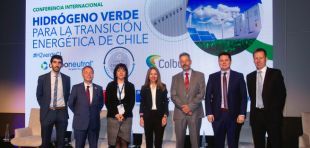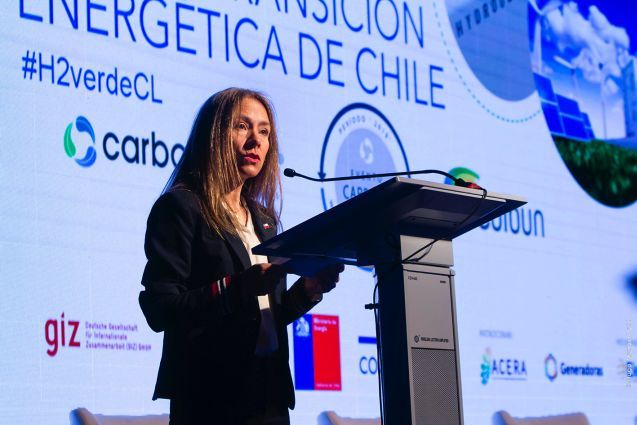'Green' hydrogen beckons for Chilean industry

Chile’s second international hydrogen conference brought together 34 experts from 13 countries to discuss sustainable and climate-friendly production and use of hydrogen.
The second international conference, entitled ‘Green hydrogen for Chile’s energy transition’, brought together 34 experts from 13 countries to discuss the challenges that producing and using emission-free hydrogen poses for the Chilean economy. The conference attracted more than 400 participants, including representatives of 285 companies, 80 state bodies and 62 higher education institutions. The event was also live-streamed and was viewed by around 300 people in nine countries. The conference was organised by the Promoting Solar Energy Project as part of the German Federal Ministry for the Environment, Nature Conservation and Nuclear Safety (BMU)’s International Climate Initiative (IKI) in cooperation with Chile’s Ministry of Energy and the country’s Production Development Corporation (CORFO).
Susana Jiménez, Chile’s Minister of Energy, said in her opening address ‘It is highly probable that in future, Chile will be able to produce green hydrogen efficiently and competitively by exploiting the rich economic potential of renewable energy.’ She added, ‘The Ministry of Energy is focusing on the entire hydrogen industry value chain and on the scope it offers our energy matrix for mitigating climate change by using efficient and competitive renewable energies.’

Ammonia can be produced with the Haber-Bosch process using hydrogen produced by electrolysis and nitrogen from the atmosphere. It is easy to transport and store and is used by industry for various processes or as a hydrogen-rich fuel. Around the world, natural gas and coal gasification are currently used to produce around 180 MT of ammonia a year. However, this produces 420 MT of CO2 emissions. Using renewable energy to produce hydrogen could drastically reduce these emissions.
A study conducted by the Deutsche Gesellschaft für Internationale Zusammenarbeit (GIZ) GmbH estimates that renewable energy in Chile represents a potential of at least 1,800 GW. The country needs just 22 GW to meet its need for electricity, so the unused potential could be used to produce hydrogen and/or ammonia with zero CO2 emissions. The process would be facilitated by the low cost of generating electricity from solar and wind power, which in 2017 was less than USD 20/MWh.
The Vice-President of CORFO, Sebastián Sichel, said ‘Chile has one of the highest levels of solar radiation in the world. We have a great opportunity to develop Chile as a hub for sustainable production of hydrogen and to build an entire new industry.’
Rodrigo Mancilla, Director of Chile’s Comité Solar, was enthusiastic about Chile’s prospects of using large solar power plants, photovoltaic systems and concentrated solar power to offer hydrogen production at a significantly lower cost than other producers. ‘We are working with companies and academic institutions on developing innovative solutions for this technology’, he said. ‘In the near future, we shall be carrying out an analysis of the potential for hydrogen production in the Antofagasta and Atacama regions, including the economic impact.
Chile is keen to be a global pioneer in green hydrogen production and plans to invest USD 200 million over the next 10 years in a technology institute to support its energy transition and research lithium materials.

The link has been copied to the clipboard
Contact
IKI Office
Zukunft – Umwelt – Gesellschaft (ZUG) gGmbH
Stresemannstraße 69-71
10963 Berlin













